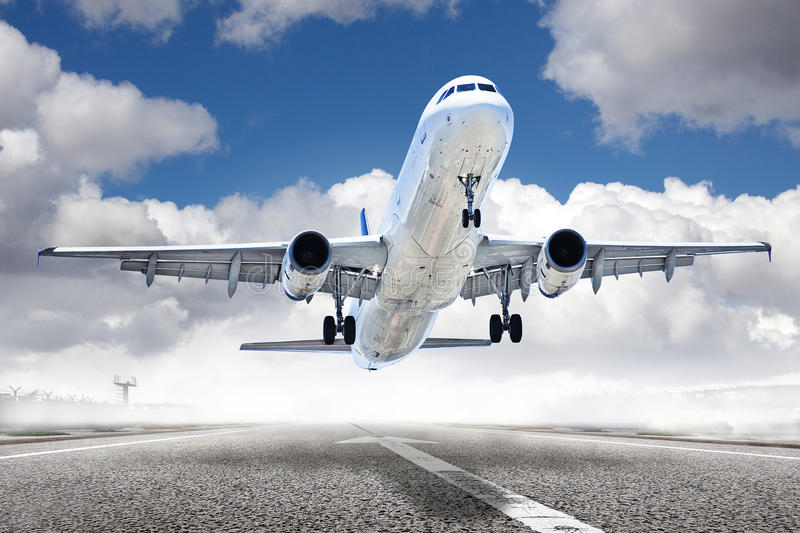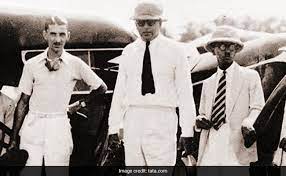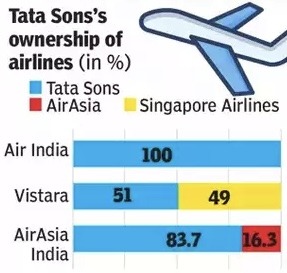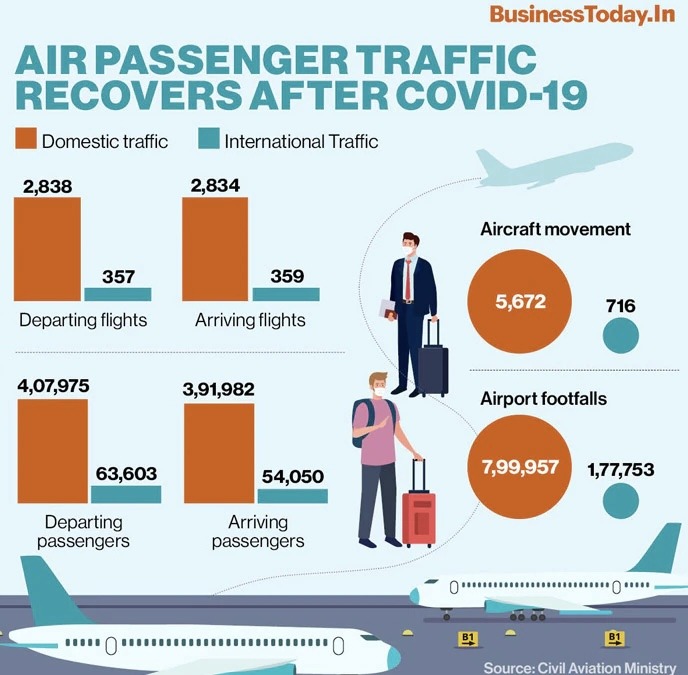Ready for Take-off: India’s Aviation Revolution

While covid and its consequences interrupted the unhindered growth of this industry, looks like things are finally coming back on track. Have you fastened your seat belts? Because ready to take off into the world of Indian aviation today!
The Indian aviation industry crossed 4,00,000 domestic air passengers a day on 17th April for the first time since the onset of the Covid-19 pandemic. The airlines carried 4,07,975 passengers on 2,838 flights which amount to about 95.5% of pre-Covid-19 daily domestic air passenger traffic.
The Indian civil aviation industry has emerged as one of the fastest-growing industries in the country as per a projection by Airbus.
The reason behind this is that Air India, under the Tata Group, is planning for a $50 billion jet order, one of the biggest in the history of the aviation industry, which could be a big boost for this sector.
But let’s travel back in time to the 1930s to see how the Indian aviation revolution was birthed-
The first flight 🛩
Indian aviation saw its first commander in J.R.D Tata, who founded Tata Air Services in 1932.
By the year 1939, this air-mail service became a full-service carrier.

Fast forward to 1947, Tata Air was renamed Air India, and in 1953, the Indian government took a 49% stake in the airline, taking over the powers of the ‘maharaja’.
By the 1950s, some other airlines that populated the sky were- Deccan Airways and Kalinga Airways, although Air India continued to be the national carrier.
In 1953, the government merged all the major airlines into two carriers– Indian Airlines and Air India.
When modern-day Indian aviation took off….🛫
In 1994, the introduction of private airlines formed the backbone of the current aviation industry in India.
Jet Airways and Air Sahara began to be sighted on the runway. International airlines like Lufthansa invested in ‘Modiluft’, but it failed to succeed and went on to become what we know today as Spice Jet.
The 2000s marked the entry of low-cost carriers like Indigo, Kingfisher Airlines, and Go First, which increased the competition for the likes of Air India and Indian Airlines.
The good times for Kingfisher Airlines neared an end when they ventured into the low-cost segment after acquiring Air Deccan.
In 2013, Tata Sons teamed up with Malaysian discount carrier AirAsia to set up a low-cost airline in India.
After waiting in the wings for nearly a quarter of a century, Tata Sons and Singapore Airlines revived their proposal to launch ‘Vistara’ in the year 2013, which commenced operations in 2015.

Landing onto the present day 🛬
There are numerous airlines in India, yet, IndiGo is the only airline that has broken even and consistently been profitable. One primary reason for incurring considerable losses in this business is the cost of jet fuel. Its prices in India are among the highest in the world.
In June 2022, prices of jet fuel reached at an all-time high after a 16% hike. The increase in jet fuel price will raise the operating cost for airlines. Aviation Turbine Fuel (ATF) makes up to 40% of an airline’s operating cost.
‘Low-cost’ carriers are struggling to keep the prices low, as they wrestle with an important factor: Indians are price sensitive.
Jet Airways experienced a crash landing in early 2019, due to financial troubles after it couldn’t endure the fierce competition from other airlines amongst other stumbling blocks.
Flying high in the years to come ✈️
From transporting 19 million passengers in 1997 to 317 million passengers in FY19, Indian aviation has come a long way for a sector that was deregulated only in 1991.
So much so that we are set to surpass the United Kingdom to become the world’s third largest aviation market by 2024.
A sum total investment of Rs. 42,000-45,000 crore is expected to be put into India’s airport infrastructure between FY18-23.
The Airport Authority of India (AAI) plans to invest Rs. 25,000 crores in the next five years to augment facilities and infrastructure at airports.
The year 2022 also saw the launch of Akasa Air, backed by the ace investor, the Late Mr. Rakesh Jhunjhunwala. Jet Airways is also just a few days away from its re-launch, after 3 years.
Domestic air travel has made a sharp recovery this year with airlines flying over 57 million passengers in the first half, up 238% from last year.

Looks like the Indian aviation industry is set to reach new heights in the coming years.
Markets Last Week
|
|
|
|
Europe Plus One the new China Plus One?
How does Nord Stream 1 being closed off impact Europe? Is disinvestment in the air? Read what popular smallcase Manager, Divam Sharma, Founder, Green Portfolio, says about it all!
This week, we‘ve been….
Listening to The Official Game of Thrones Podcast: House of the Dragon podcast: After HBO’s mega-hit show ‘Game of Thrones’, its prequel, titled ‘House of the Dragon’ ascended on Disney+ Hotstar last week. If you are also hooked on this show, you can hear this to get some related scoop. Grab a bag of popcorn, and you surely won’t be disappointed.
Reading Whole Numbers and Half Truths by Rukmini S.: India completed 75 years of independence last week, and this book is an eye-opener to the changes that have occurred in India over the last few years. Rukmini helps us get the context behind all the statistics that get shared on our WhatsApp groups and does rounds in prints. A fun read if you love everything data!
The aviation industry flying high bodes well for the 11.3 million people that it directly employs today. The pandemic caused wreckage to the financials of the industry leaving many struggling. However, with support from the government and other policies being built to boost the sector, looks like India’s cibil aviation industry could go far. So, would you invest in this sector?





























































